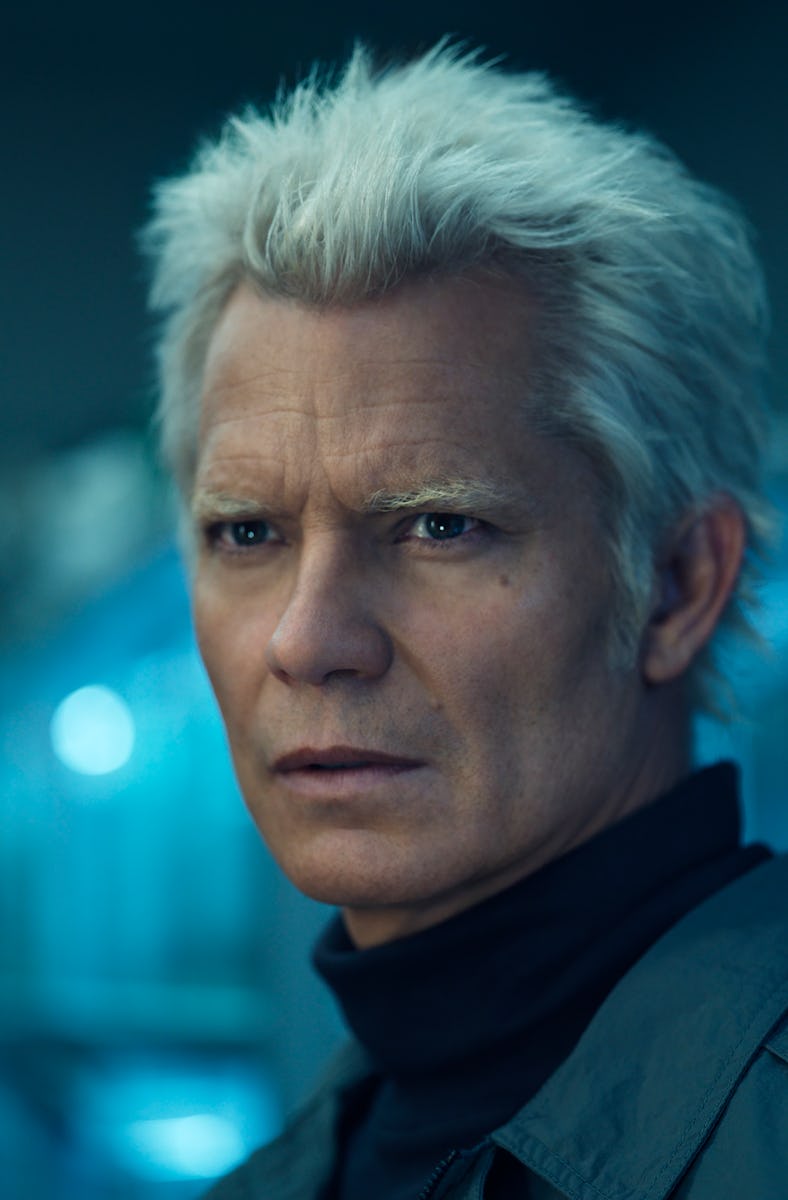Alien: Earth Has Totally Changed Alien Robot Canon In 3 Crucial Ways
Here’s how the edgy new sci-fi show has reimagined the franchise’s take on synthetic life.

One of the greatest twists in any sci-fi story was the fact that in a movie called Alien, the biggest secret was that one of the crew was an undercover robot. And, in 1979, when we learned that Ash (Ian Holm) was really a synthetic android, working for the company, an entire multifaceted layer of the Alien franchise was born. And, since that first robot revelation, various Alien movies have introduced a variety of different Weyland-Yutani androids, from the heroic Bishop (Lance Henriksen) in Aliens, to the duplicitous David (Michael Fassbender) in Prometheus, and most recently, the kindhearted Andy (David Jonsson) in 2024’s Alien: Romulus. And, later this year, yet another Weyland-Yutani synth will cross over into Alien’s sometimes sibling franchise, Predator, when Elle Fanning appears as Thia in the upcoming film Predator: Badlands.
In short, the synthetic lifeforms of the Alien franchise are having a moment in 2025, though they have been compelling since 1979. But with the release of Alien: Earth, the entire robot game of the Alien canon has been changed. Here are the three new ways Alien: Earth is having us think about synthetic life in a world in which chestbursting xenomorphs are the greatest threat to humanity.
Spoilers ahead for Alien: Earth Episodes 1 and 2.
Synths
Timothy Olyphant as Kirsh, a somewhat traditional Alien robot.
At first glance, the Synth — or android — that we meet at the start of Alien: Earth is very much like the Synth folks we’ve met before. Timothy Olyphant’s character, Kirsh, is a kind of mentor to Wendy (Sydney Chandler), who is basically the main character of the show. Kirsh, like Ash or David before him, can alternate between seeming humane and nice, and can quickly pivot into being downright cold.
However, because Kirsh works for the nation state of Prodigy, he’s almost certainly not a Weyland-Yutani android. Instead, it seems more likely he was built by the folks who work for the mogul named Boy Kavalier (Samuel Blenkin). So, although Kirsh isn’t an entirely new type of android in the Alien mythos, he is a new brand of robot. Literally.
Cyborgs
Morrow (Babou Ceesay) works for Weyland-Yutani. But he’s not an android. He’s a cyborg.
Early trailers made us think that Morrow (Babou Ceesay), a crew member on the crashed ship, the Maginot, was perhaps a classic Weyland-Yutani Synth. But now, we’ve learned he’s something else entirely. Morrow isn’t really a robot at all, but instead, a human with enhanced abilities, a classic cyborg.
In the first two episodes, Morrow’s enhanced powers include super-strength and the ability to produce weapons right out of his arms. In some ways, Morrow feels like a version of Murderbot, fused with the augmented humans from that show. But, crucially, Morrow is human, just with synthetic parts.
Hybrids
Adarsh Gourav as Slightly and Sydney Chandler as Wendy, both hybrids and the first of their kind.
The most game-changing invention of Alien: Earth is the last new group of quasi-robots, the Hybrids. As the opening text of the show tells us, Hybrids are: “Synthetic beings downloaded with human consciousness.” This isn’t a particularly new idea in science fiction, per se. After all, Jean-Luc Picard literally had his consciousness downloaded into a Synth body back in 2020 in the finale of Star Trek: Picard Season 1. The crucial difference in Alien: Earth is that all the Hybrids in this show, so far, have the minds of children. Wendy and the other “Lost Boys” of this group were children with terminal illnesses, but had their lives “saved” by getting their minds moved into the robot bodies.
When Wendy reunites with her human brother, Hermit (Alex Lawther) he initially mistakes her and her friends for normal Synths, because there’s a discussion of having white blood. But Wendy and the rest of the Hybrids don’t have synthetic minds like Kirsh (or David), but also lack any organic parts like Morrow.
Kavalier describes the creation of the Hybrids as part of “an intelligence race.” Meanwhile, onscreen text at the beginning of the show suggests that this is all part of a race for “immortality.”
On some level, none of the new Alien robots are really robots at all. The regular Synths are designed to appear human, while the other two new kinds of robots are basically human, or at least began that way. But, by creating this three-way split, Alien: Earth has positioned itself less as a show about sci-fi musings on aliens that have acid blood, and more as a meditation on the future of humanity, and what it really means to be alive.